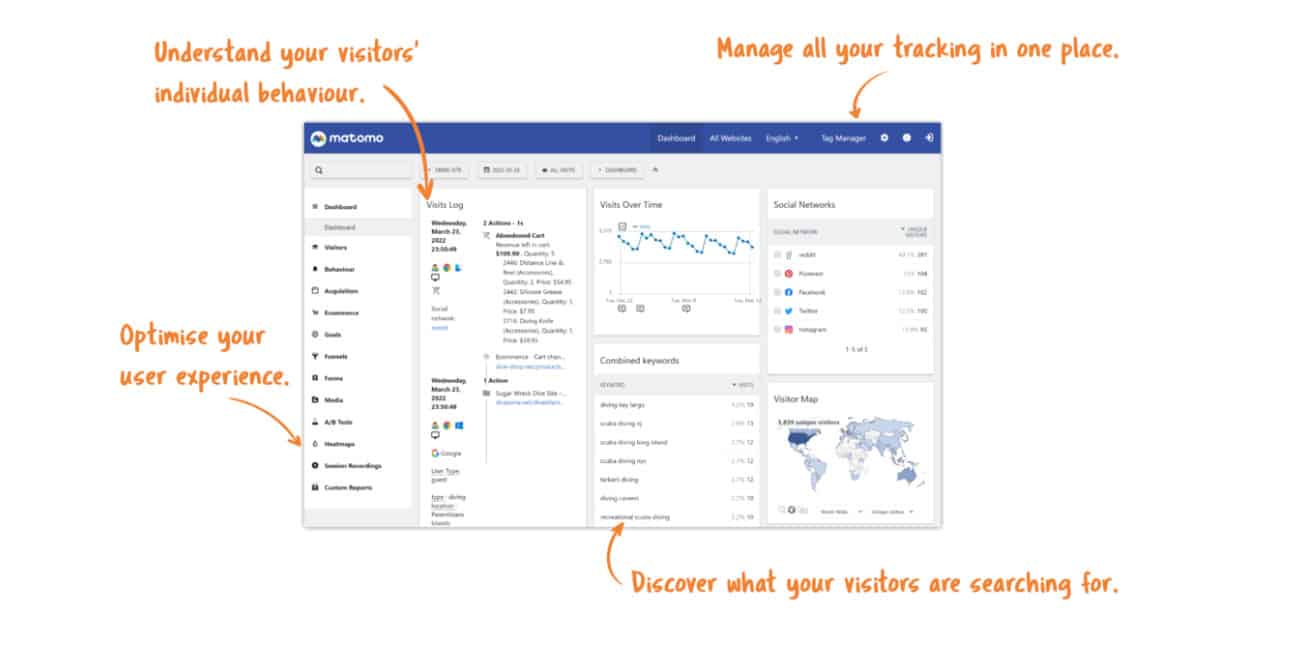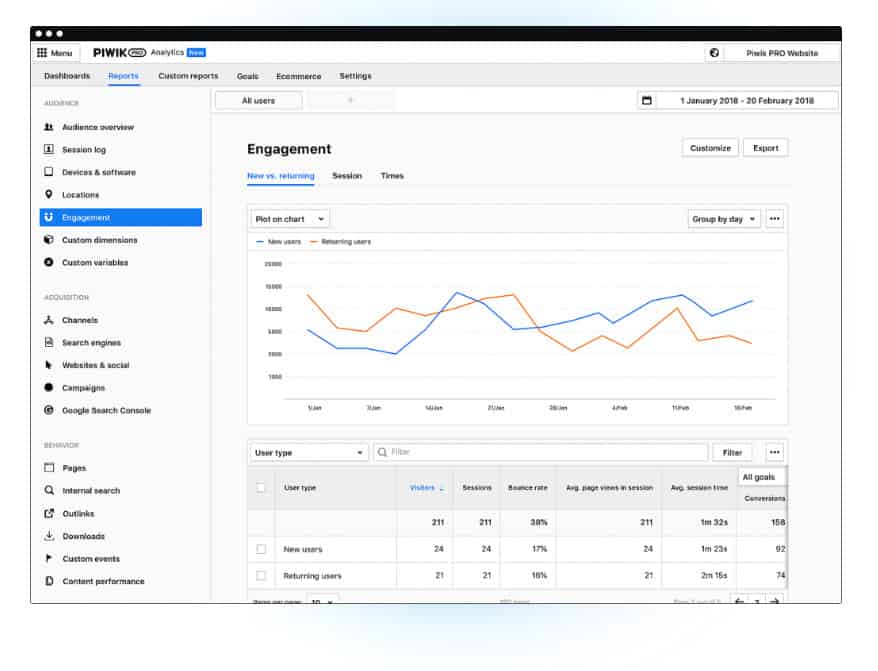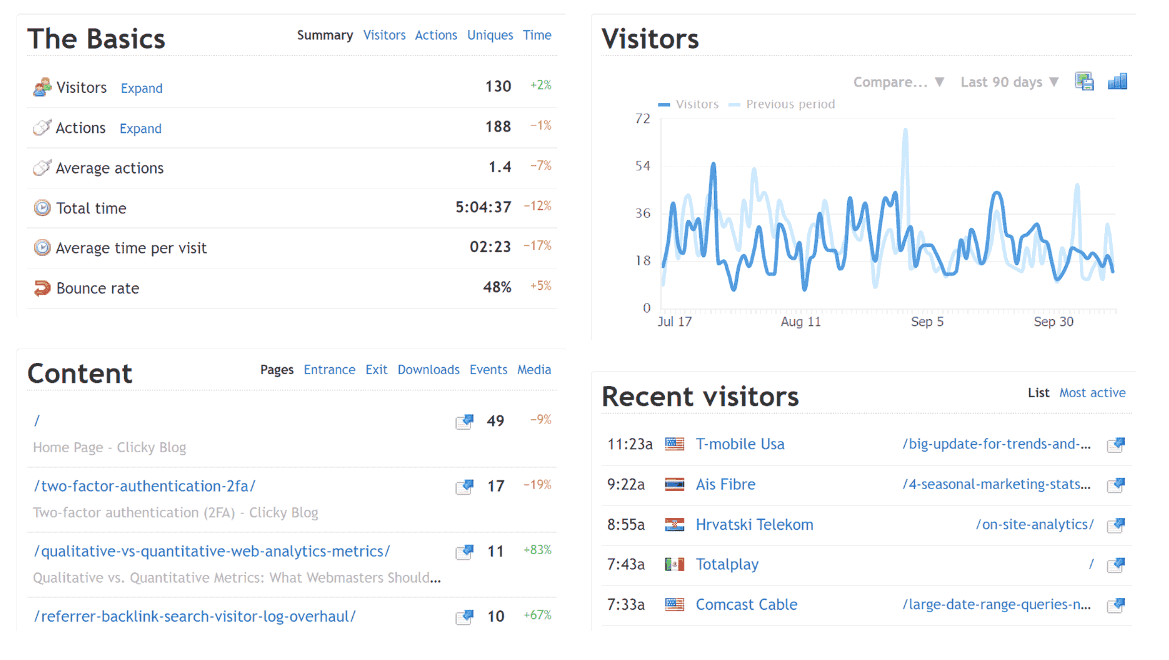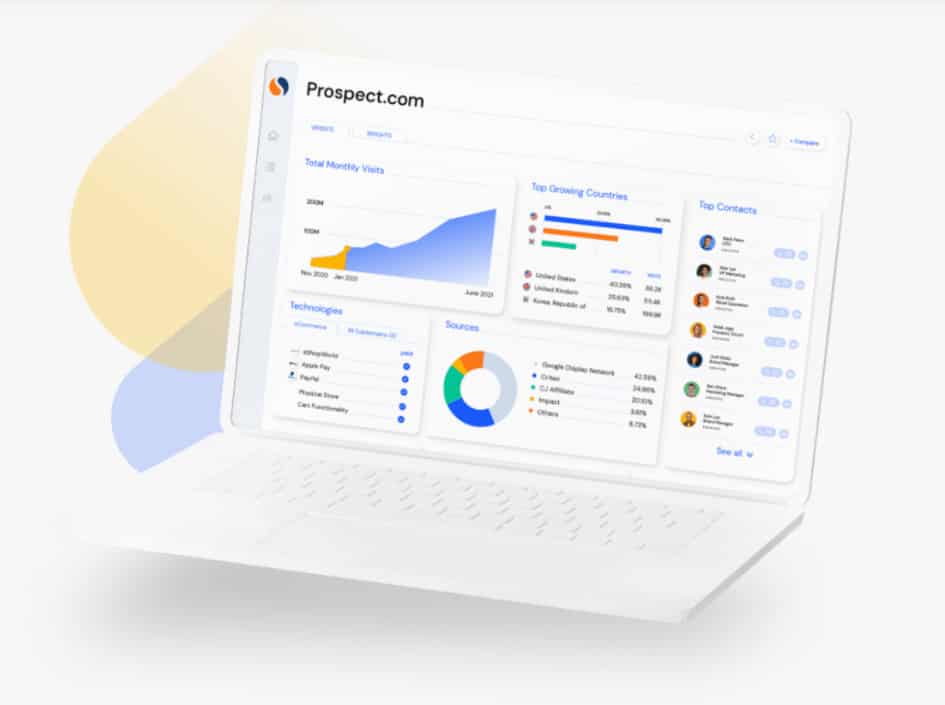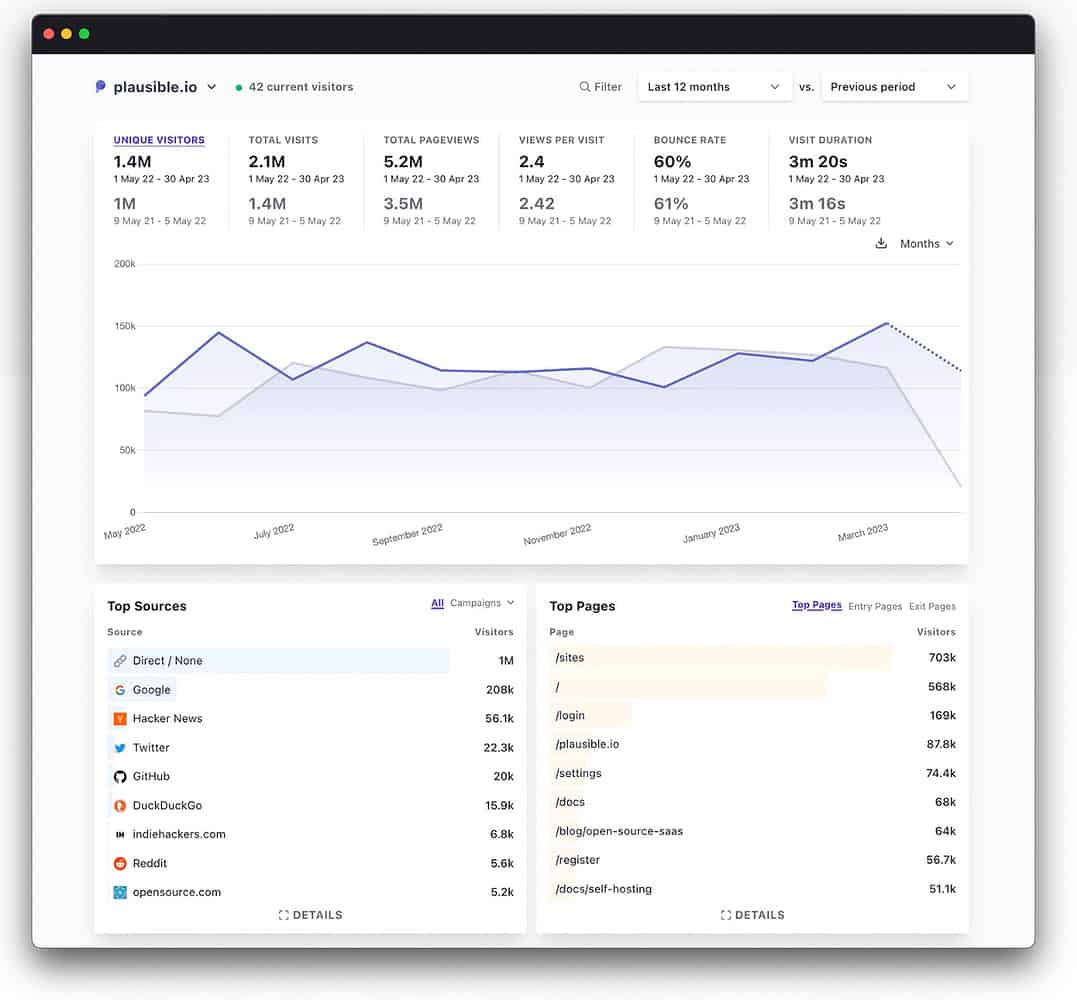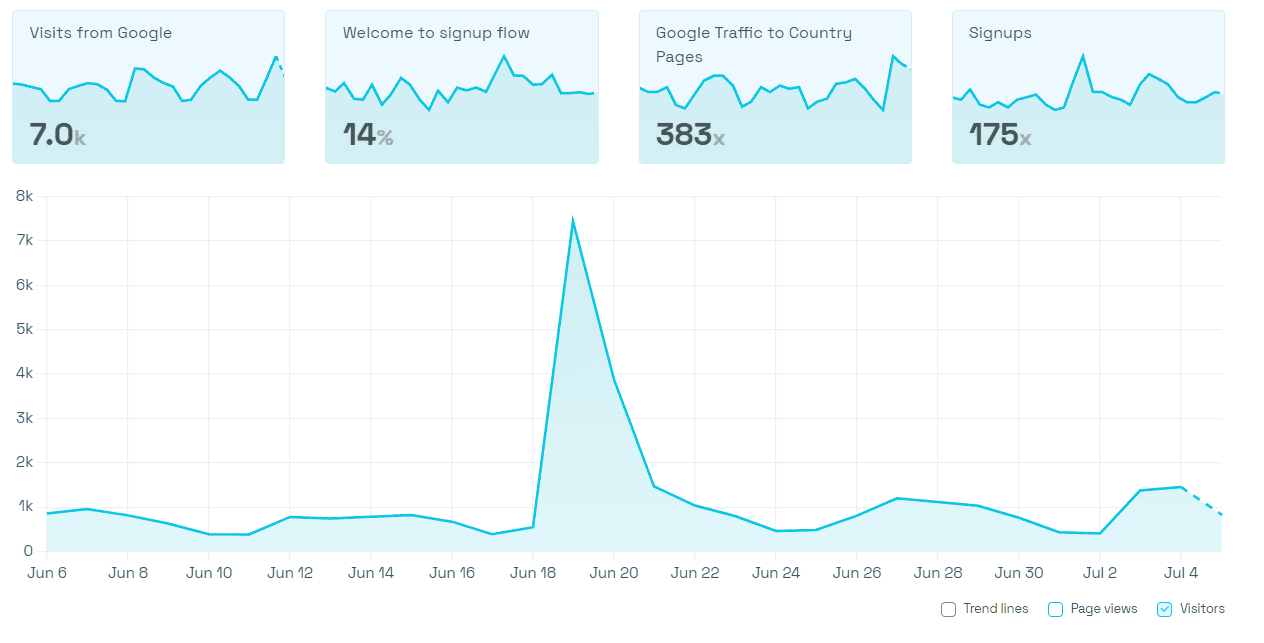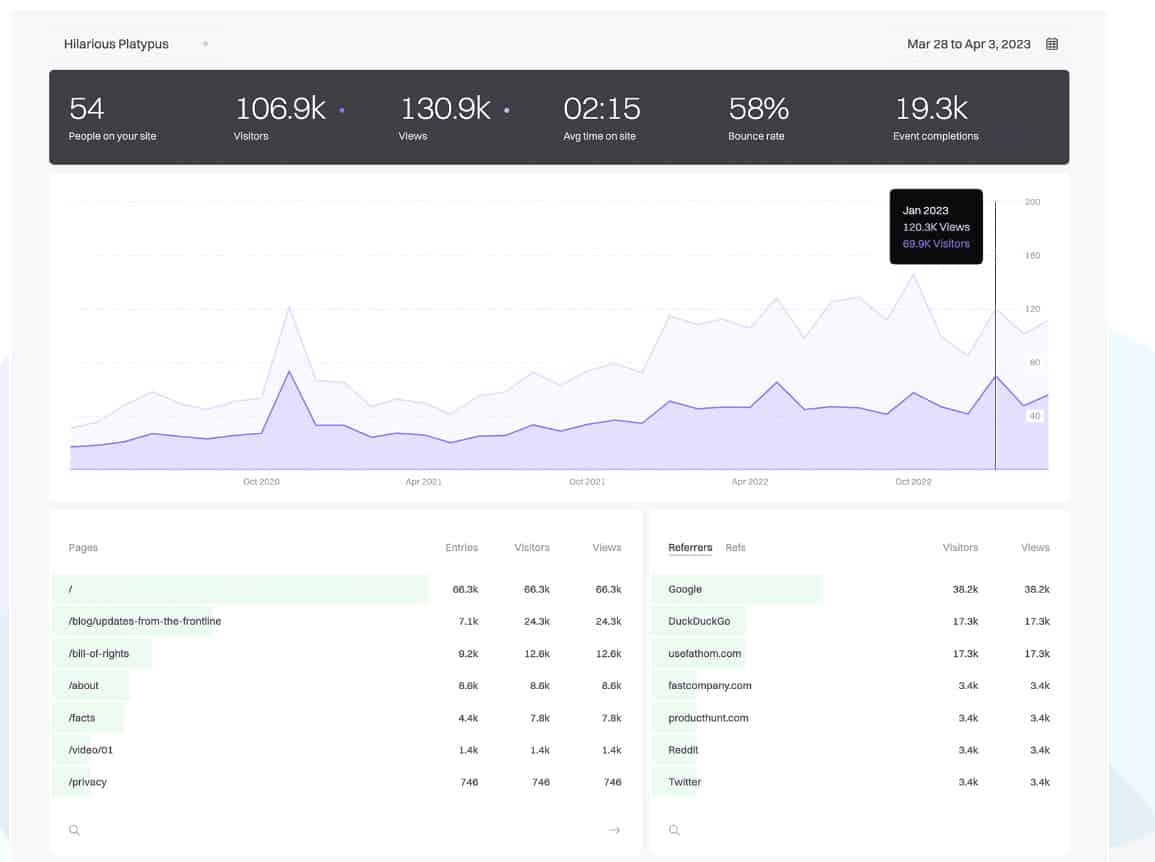The Web analytics tool Google Analytics 3 (aka Universal Analytics) is on its way out. Although some data is still being collected, official support came to an end on July 1. Google itself wants website owners to switch to Google Analytics 4, but this tool lacks essential functionalities such as bounce rate and average reading time of sessions and on pages. Not only that, it’s come under fire for its loose approach to user privacy. Which alternatives suit your website?
Web analytics is a broad playing field, where many different options are conceivable. For this overview, we looked for tools capable of more than just the most basic metrics. Users should get an insight into visitor behaviour, origin and engagement regardless of the option chosen here. It’s about more than just page views and bounce rate, because reading time, referrals (e.g. from Google, internal links etc.) and other options within a web analytics tool really differentiate the applications among them. In addition, the pricing model matters, because why pay when there is a free alternative that works just as well? Finally, we talk about the privacy sensitivity of each tool, as the example of Google Analytics 4 proves that GDPR compliance is not a certainty.
Matomo
The first tool we’ll be taking a look at is Matomo, which until 2018 went by the name of Piwik. It has been the most popular open-source alternative to Google Analytics since it launched in 2007. One can choose an on-prem or cloud-based variant and, when switching from Google Analytics, can easily import the existing data. Its development team has made the setup process as simple as possible, which can be accessed here. The fact that the tool is open-source means that for specific needs there is the possibility of making extensive changes. For example, one user talks about a modification they made to prevent the Matomo script from being blocked by an adblocker.
There are many ways to control what data Matomo tracks, with the user determining the balance between functionality and privacy-centricity. It promises to produce accurate information because it does no data sampling, i.e., it does not make assumptions based on a subset of said data. The on-prem version is free, while the cloud variant costs 19 euros per month. The pricing model, however, is mainly focused on offering individual features as extras that are charged on an annual basis. By default at least, Matomo includes things like user tracking, a customizable dashboard and visitor locations. Because of this pricing model, the actual cost can vary tremendously depending on what you as a website owner want to gain an insight into.
However, there has been criticism of the user interface, which several customers described as outdated. One particularly critical review also spoke of lousy customer service and bugs that called into question the accuracy of the analytics. Fortunately, thanks to the free offer, it is possible to try the tool for yourself. In essence, the tool is usable for just about any website where it is important to track how well the content scores and which visitors one receives. Sounds like just about every website, then.
Piwik Pro
Matomo’s former name is continued by Piwik Pro, which dates back to 2013 as a fork of the source code of the former Piwik product. However, this is not an open-source tool. It praises itself for its many privacy and security-related features, at the expense of poorer integration with Google Analytics. However, the developers even themselves state that you need a well-trained technical team or premium support to run the self-hosted version of Piwik.
The tracking capabilities are extensive, including time-on-site tracking, tracking of set goals (Campaign Management) and managing multiple websites. Much is the same as what Matomo offers, although the UI is more reminiscent of Google Analytics. For those looking to make a switch away from Google, at least, that’s an advantage. Piwik Pro does receive criticism from several customer reviews that its tag manager is inferior to Google’s.
Piwik Pro is available in the Core variant and as an Enterprise option. The price depends on the number of events and the modules chosen. In any case, the Core subscription is free and offers up to 10 sites web analytics coverage. The monthly event limit for the free version is 500,000, can remember up to 14 months of data and it provides an EU cloud version. A paid version requires a quote, which will vary significantly by company. It does offer 25 months of data retention and cloud, on-prem or private cloud options. For the full comparison of the two tiers, Piwik Pro shows an overview.
Piwik Pro offers a wide range of options, making it very scalable. Thus, smaller and larger websites can get useful insights from it at the same time.
Clicky
Clicky also describes itself as a privacy-friendly and GDPR-compliant tool. It specializes in real-time traffic. Compared to Piwik Pro, the interface is a lot more user-friendly, while users also report that the setup process is simple. The Spy feature provides manageable insight into user behaviour. Many of the features offered by Matomo and Piwik Pro are also present with Clicky. Think of heatmaps, campaign tracking, engagement reporting and time per visit, to name a few. Helpful options like seeing the number of users with an adblocker bring some nuance to the raw pageview numbers.
Users are mostly very positive, but they feel the free variant could have a few more options. There are many paid variants: Pro, Pro Plus, Pro Platinum and “Custom”. The first three cost $80, $120, and $160 per year. Apart from heatmaps and uptime monitoring, all premium features are available from the cheapest paid variant. Clicky has a comparison between the variants available here.
Clicky is reasonably priced, which may make it attractive to smaller projects. However, the features are extensive enough to be useful for larger companies as well.
Similarweb
Similarweb has been around since 2007, and apart from its Web analytics offering, it has other products aimed at marketing and sales. It uses a “data cache” of millions of users to collect data. Thus, it offers insights into user behaviour and can use this data to rank the customer’s website against competing sites.
This competitive focus is what sets it apart from the previously mentioned products. The interface is very visual and can be accessed with very low latency. The data shown on it comes from different sources that are contrasted against each other to improve accuracy.
Similarweb is free to try out for 7 days, after which the Pro version has a price starting at $200 per month, but this will only become clear after writing an offer. With the free version, users can still perform quite a bit and even receive data reports in PDF format. Pro customers, however, can request Excel versions, making post-analysis a lot easier.
The marketing focus makes Similarweb a prominent option for websites that need to keep a close eye on the competition. The aforementioned options are each strong in their own way in reflecting the pursuits within their own websites. What will be missing there for some is the relative relationship with other players in the market in question.
Plausible
Plausible is open-source and explicitly calls itself an alternative to Google Analytics, like some others do as well. It describes itself as “lightweight,” thanks to its script that is said to be 45 times smaller than Google’s. It promises to offer a smooth transition from Google Analytics.
In terms of functionality, it integrates with Slack to deliver reports every week or month. Likewise, it can notify by email that a traffic spike is going on. Everything can be seen on one dashboard. Users are positive about the clarity of the UI and the fact that there are no cookies. However, that does cause the tool to have less information about visitors than the competition. Perhaps that is not a problem for a small-scale user.
The price depends entirely on the number of monthly page views. Those who go up to 10,000 only have to fork over 9 euros per month after the 2-month trial period. With 100,000 pageviews it goes to 19 euros p/m. This continues to scale up to 10 million monthly pageviews, charging 169 euros. If the website exceeds that limit, Plausible agrees on the price after contact with the customer.
At each price level, Plausible works for 50 websites. It boasts about “100% data ownership”, and you can create custom events for it. There is no limit on data retention or the number of team members that can use the tool. Again, Google Analytics data can be imported to make the switch workable.
In short, a tool for users with not too many complex requirements and a focus on privacy.
Simple Analytics
Like Plausible, Simple Analytics directly addresses the privacy issues surrounding Google Analytics. The company promises to keep data encrypted; no cookie notifications will appear for the end user. All infrastructure is within the EU for EU users. It sounds very similar to Plausible, but the company itself suggests there are quite a few differences.
Compared to Plausible, Simple Analytics measures a user’s time on the Web site differently. For example, it can remember time-on-page when a visitor has only been on a single page, while Google Analytics and Plausible cannot. It also says its privacy priority is even greater than its competitors. While Plausible anonymizes but still tracks an IP address for a day, Simple Analytics does not even do that.
Simple Analytics is not open-source and can only be obtained after payment. The Starter Plan costs $108 per year, while the Business Plan is $588 p/y. It covers up to 100,000 or 1 million page views per year.
Ultimately, Plausible and Simple Analytics compete for the same privacy-sensitive customers, but the latter goes to greater lengths to achieve this.
Fathom
Once again we are dealing with a tool that positions itself diametrically opposed to Google Analytics: in this case, it talks about “The Google Analytics alternative without compromise.” It flaunts a quick setup, a light script and privacy-focused options like Plausible and Simple Analytics.
Customers report that Fathom covers all major metrics and includes many desirable features, including real-time tracking and customizable dashboards. However, opinions are divided on the user interface and many users want a little more control over things like events and goals. In addition, importing Google Analytics data was only recently added, so many may have found an alternative in the meantime. Customer service does score points, something that is far from a guarantee
Fathom has a one-week trial version, after which there are three paid options. Up to 100,000 monthly page views it costs $14 per month, 200,000 becomes $24 p/m and 500,000 costs $44 p/m. Above that, as is often the case, it must be contacted for a quote.
Fathom has the unique advantage of being lightweight but leaving out as few options as possible to still get rid of Google’s data hunger.
Conclusion: something for everyone, with privacy and usability being key points
The overview above shows that many features are familiar territory, but that does not mean that all the extras are necessarily desirable or necessary. After all, those wanting to know more about website visitors will need additional data. This can lead to a heavier tool with noticeable performance implications for the website. Even purely from an ethical perspective, any potential customer may wonder what is wanted.
What is clear, however, is that the installation and availability of several tools is better for those not willing to pull the trigger rightaway. In the end, there is little to lose by trying the tools that have a free version. Those who want more must think carefully about their specific requirements. Do we need to keep a close eye on the competition? What if we don’t have too many specialists in-house and still want to access Web analytics ourselves? With those issues, it is important to have a clear answer. In the search for the right analytics tool, it is essential to know your own product beforehand.
Also read: Swedish regulator orders three firms to stop using Google Analytics

